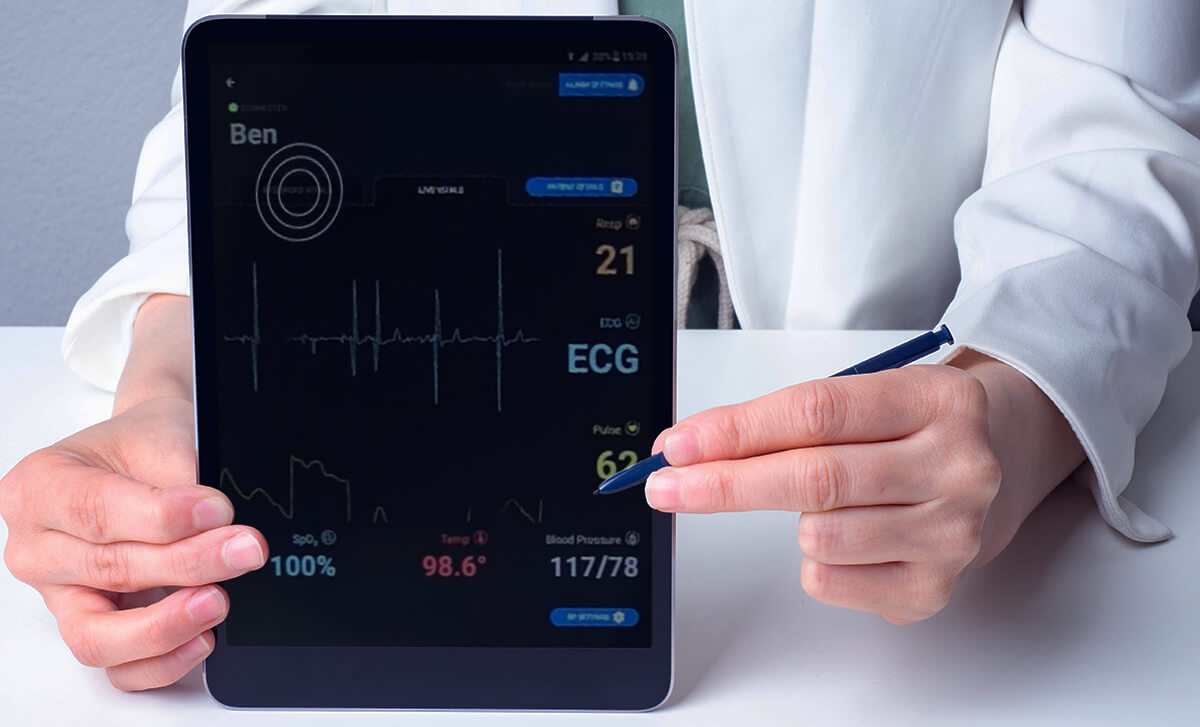
Hospitals never sleep. Despite the tireless efforts of doctors and medical staff to monitor patients 24/7, it is impossible to detect every underlying complication or emergent situation that may arise.
Often, doctors are unable to gauge accurate hemodynamic parameters of a patient at the time of admission. The condition of certain patients who seem normal might suddenly deteriorate when doctors or staff are away. Cardiac patients may develop heart blocks or infections when not being under constant observation. Patients who have been discharged may also turn up with new or aggravated symptoms.
How can such situations be minimized, if not eliminated completely?

The Solution: Remote Patient Monitoring (RPM)
Technology has played an inevitable role in enhancing various processes in the field of medicine and intensive care. We live in the age of Fitbits and smart health watches—and there is no denying that the future of healthcare is closely tied to the internet and big data, even more so, since the onset of the pandemic. Which is why Remote Patient Monitoring (RPM) could be the next best thing in optimising medical care and saving lives.
What is RPM?
RPM is a form of telehealth which involves healthcare provided remotely. It allows healthcare professionals to collect, store and analyse patient-generated data remotely, via online portals or wearable devices.
How does it help?
RPM opens up a world of possibilities in streamlining healthcare. Let’s take a look at some of its major benefits:
Switching to RPM can help the patients in the long run by detecting unstable vitals and patterns in their systems, allowing them to adjust the care regimen or adopt lifestyle changes that can significantly improve health. It also extends the possibility of a better quality of care, as the doctors can perceive a patient’s requirements well before it reaches a risky stage.
According to the National Broadband Plan drafted by the Federal Communications Commission (FCC), the healthcare industry could save $700 billion within two decades, thanks to the use of RPM technology in conjunction with electronic health records (EHR). More importantly, it allows for fewer ICU admissions by enabling doctors to monitor high-risk patients in the hospital wards itself.
RPM can help doctors and patients manage the symptoms of chronic conditions like diabetes or heart disease better by collating and analysing hemodynamic parameters such as blood glucose and blood pressure levels. Knowing these parameters can help the patients keep a close eye on sudden fluctuations and enable doctors to provide efficient and rational care.
RPM notifies patients and doctors about fluctuations in health parameters, which allows them to tackle the situation before things get out of hand. Advanced features that measure heart rate, ECG, respiration rates, blood pressure, oxygen volume in blood etc. can help avert emergencies like severe hypoglycemia, blood clots and heart blocks. It also allows patients to keep track of their health without coming in for regular checkups, thus saving time and money, as they do not have to be physically present in hospitals.
Moving Ahead with RPM: Making The Right Choice
Though RPM puts forward unlimited prospects to revolutionise healthcare, the majority of hospitals and doctors in India are sceptical about its efficiency. The Indian market also faces the additional challenge of limited options when it comes to reliable RPM providers. Making the right choice is vital, as it could literally make the difference between life and death.
Stasis is accelerating the practice of medicine towards proactive care with its smart, continuous, remote patient monitoring solutions. Stasis offers a US FDA-cleared, made-in-India, remote patient monitoring solution that gets the right data to the right stakeholder, at the right time.
The flagship Stasis Monitoring system can help combat COVID-19 and convert your hospital into the Smart Hospital of the future. Here are some of its features that will help provide seamless healthcare:
According to Berg Insights, RPM is expected to grow at a compound annual growth rate of 48.9% through 2020, reaching an estimate of 36.1 million patients. Your hospital too could play a part in paving the way to this promising future. Become an RPM champion—join the Stasis Network of hospitals today!
Learn more about how Stasis can help you make a difference.